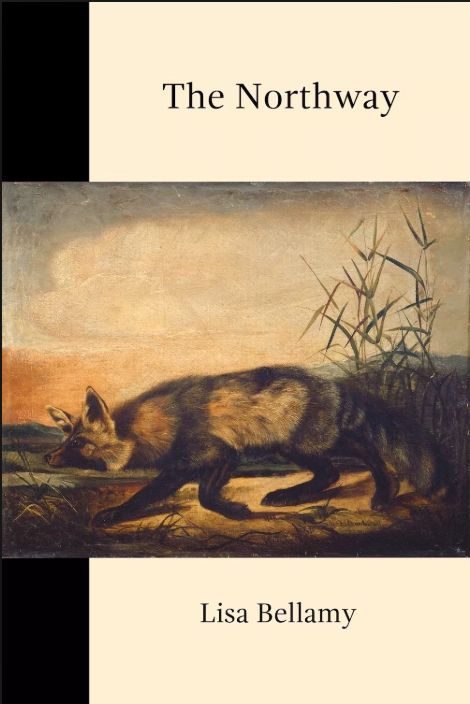ISSN: 1941-4137
POETRY THAT ENACTS THE ARTISTIC AND CREATIVE PURITY OF GLASS
POETRY THAT ENACTS THE ARTISTIC AND CREATIVE PURITY OF GLASS

Anne Graue is the author of Fig Tree in Winter (Dancing Girl Press, 2017) and has work in SWWIM Every Day, Plath Poetry Project, Rivet Journal, Into the Void, Mom Egg Review, Random Sample Review, and One Sentence Poems. She has reviews in Glass: A Journal of Poetry, Whale Road Review, and The Rumpus. She is a contributing editor for the Saturday Poetry Series at Asitoughttobe and is a reviewer for NewPages.
July 23, 2019
Edited by Stephanie Kaylor
Edited by Stephanie Kaylor
Review of The Northway by Lisa Bellamy

The Northway
Lisa Bellamy
Terrapin Books, 2018
The poems in Lisa Bellamy’s The Northway (Terrapin Books,) abound in metaphors that use elements from the natural world as apt vehicles for human emotion and experience. The tight construction of each poem is effective in subverting what is compared in each piece and in offering some uncertainty whether tenor and vehicle are occasionally interchangeable. This uncertainty mirrors the uncertainties of life that arise within a pantheistic perspective infused in each poem. Bellamy’s deft use of language prevails upon sensibility and reason in a way that feels intuitive, inherent, and universal while presenting new purposes for metaphor.
John Keats’ metaphor in “Ode on a Grecian Urn” is one that works both ways; it exchanges vehicle and tenor and flips the reader’s expectations of a straight comparison of beauty to truth. When Keats tells us truth is beauty, the metaphor transcends its definition to encompass so much more than a comparison. Bellamy switches tenor and vehicle in a number of poems in her collection but in a much more subtle manner than Keats, acknowledging a kinship with works of great metaphysical influence through her use of complex poetic elements while establishing her unique voice.
Bellamy’s metaphors are more similar to Emily Dickinson’s in that birds, mammals, and plants are often interchangeable with humans and represent emotions even from within their scientific realities. As Dickinson often does, Bellamy’s poems work not only as extended metaphors but as points of departure, grounding readers in metaphysical spaces where spiritual exchange and even growth is possible. In Bellamy’s “God is an Old Pear,” for example, the speaker’s restlessness is assuaged by “a greenish-brown pear” that becomes a soothing amulet, and in “My Beloved is Like an Otter Again” the otter’s characteristics become those of the beloved who “moves through space as if it were milk” where he is “sleek and light,” his “mind and body no longer clouded.” Within each, the otter and the pear, is something natural and sacred that is worthy of notice and reflection.
There are poems in Bellamy’s collection that are straightforward in their comparisons and tenacious in their tone. In a few, the speaker assumes the characteristics of a living thing, (plant, mammal, bird, or reptile) to illustrate depth of feeling when only that distinctive comparison will do. “Black-Eyed Susan” is a poem replete with imagery from the plant’s perspective which explains how “this summer was horrific” and reports on the crawling aphids, the selfish bees, and the slobbering deer. The “hardiest of the hardy perennials” pleads for what she needs in a poem of cutting humor and human want. In the voice of a different flower, the speaker of the opening poem of the collection, “Wild Pansy,” similarly signifies a rugged will to live even on a trip through the gullet of a blue jay. The fluke of a life that seemed to be at an end once “She had swallowed me in my homeland when she spied me / lying easy under the sun” becomes a meditation on how life happens even in its most frightening moments. In these poems, the poet transforms the natural course of the lives of flowers into commentary on human existence, angst, and significance.
At once figurative and yet aware of their poetic potency, the speakers in Bellamy’s works acknowledge relationships between language and desire in some cases and imagery and pleasure in others. In a poem of angry transformation, “Transient Pleasures of the Animal Realm,” Bellamy casts her speaker into metaphorical possibility. Imagining herself as “…one / of the stiff-legged robins / I see marching / across our meadow…” she plays out a scenario in which she enacts revenge on “…the woman / that sexted my husband,” in an intensely physical observation of what happens to creeping things when robins find them.
A few poems offer more close observations of animals that instill a sense of awe. In “Goats” the speaker says
if I had the acreage and leisure, I would
be a goat-herder: I admire
their perseverance, willingness to forego
conventional pleasantries in pursuit
of their goals.
She describes them as “leaping for sparks that we, in our ignorance, / call stars…” and implies a desire to be more like them and less like people who care more about good opinion and achievable outcomes. Each poem moves in and out of metaphor, personification, and irony with an awareness of language and elegance of form.
Bellamy’s collection meets Coleridge’s definition of poetry: “The best words in the best order.” She is attentive to syntax, line length, and diction in a way that is unobtrusive and humble while simultaneously insightful and profound. With acute observation, a tick becomes a helpless addict “…jonesing for blood…” and a snake becomes the epitome of seasonal escape “…snuggling into a perfect crevice…” In the final poem, “The Northway,” imagination triumphs over uncertainty and with eyes closed, the speaker’s other senses intensify and like a bat she uses sonar to “soar through midnight shadows, / purple breezes, languid / rafts of loons…” as she sings to an Earth, Wind, & Fire song that lifts her further, adding a musical quality at just the right place in the poem in front of a crescendo of images followed by an unexpected denouement. Believing she sees the road better with eyes closed is effortless, and wondering whether questions posed in an earlier poem were answered is a comfortable consequence. It is not always necessary to ask what’s going on but to keep going.
Visit Lisa Bellamy's Website
Visit Terrapin Books' Website
Glass: A Journal of Poetry is published monthly by Glass Poetry Press.
All contents © the author.
All contents © the author.





